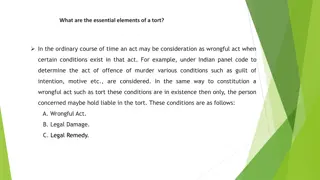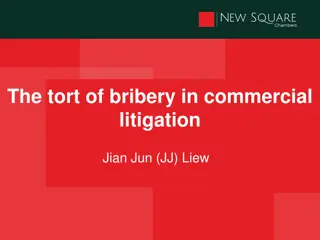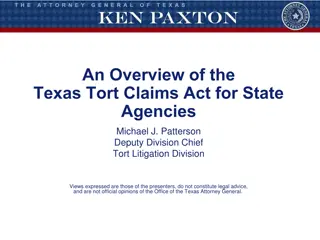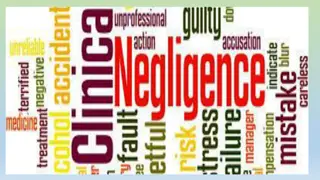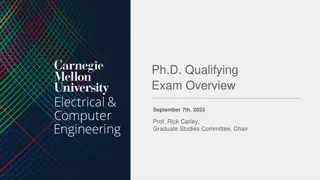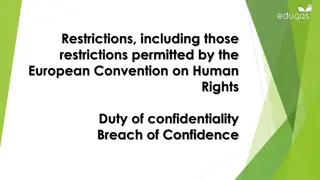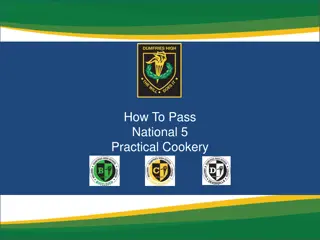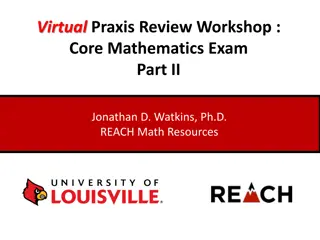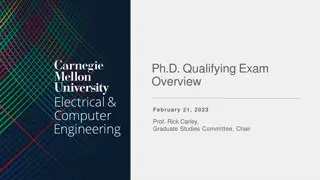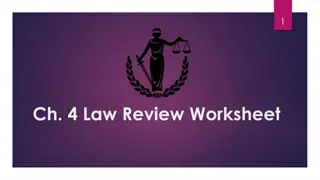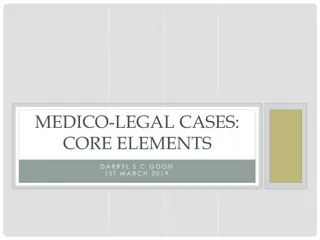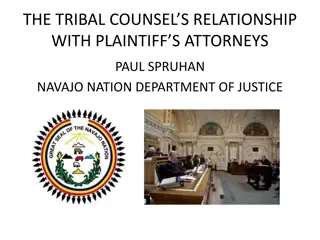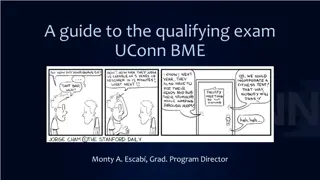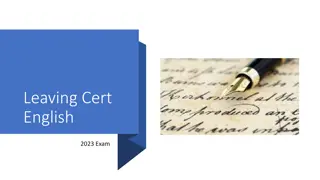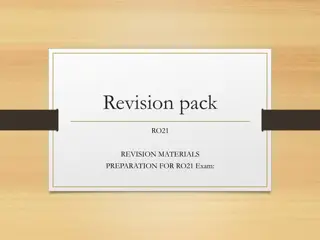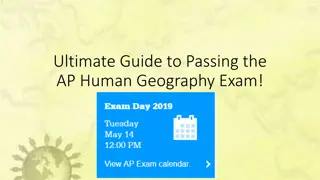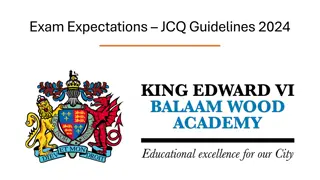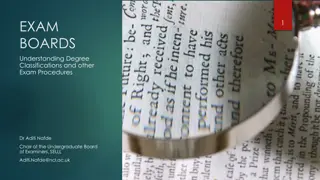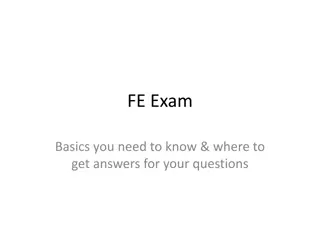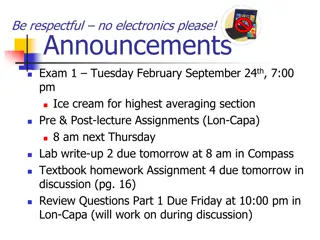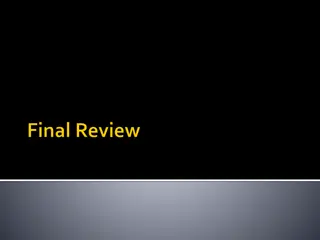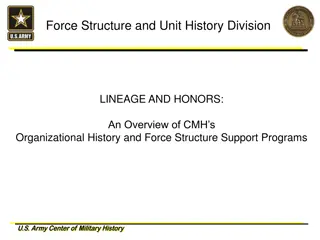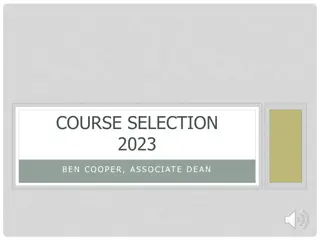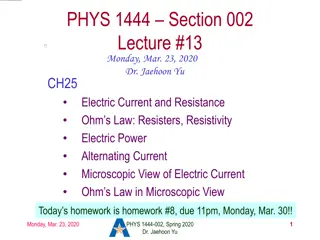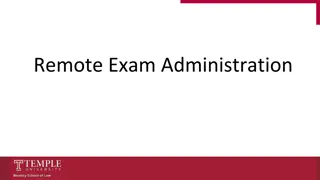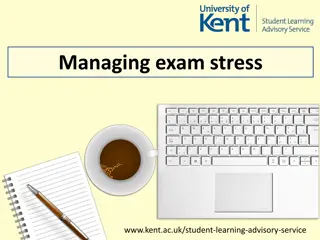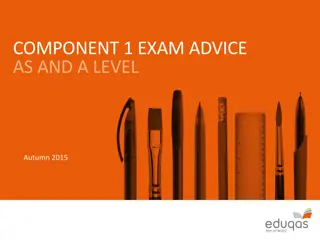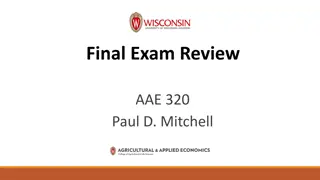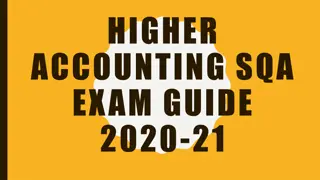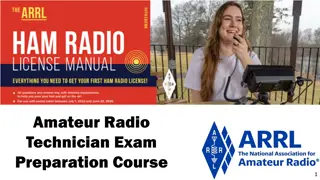Insights on AS Law Unit 2: The Law of Tort Exam
Detailed feedback on the May 2019 AS Law Unit 2 exam focusing on topics like the Caparo three-part test for duty of care, causation in tort law, and breach of duty of care. The assessment highlights candidate performance, common mistakes, need for relevant case law, and key elements required for a comprehensive answer.
Download Presentation

Please find below an Image/Link to download the presentation.
The content on the website is provided AS IS for your information and personal use only. It may not be sold, licensed, or shared on other websites without obtaining consent from the author. Download presentation by click this link. If you encounter any issues during the download, it is possible that the publisher has removed the file from their server.
E N D
Presentation Transcript
AS Law Unit 2 The Law of Tort
May 2019 General Observations Timing was important for candidates to ensure sufficient time was allocated to Q4 and Q5 which had the highest mark allocation. Some candidates now attempting these questions first. Very few rubric errors and candidates generally coped well with the demands of the compulsory nature of the questions. Some evidence of lazy case citation, or case dumps .
Question 1 Explain, with relevant case law, the Caparo three- part test used to decide whether a duty of care is owed. Suggested content: Donoghue v Stevenson neighbour principle brief mention Incremental tests in Caparo v Dickman with supporting case law. [8] Most candidates followed this structure, with good use of case law. A brief explanation of each case was needed with a focus on the point of law established in relation to the test. Some illustration of recent knowledge such as Robinson v CC of West Yorkshire Police (2018) Weaker candidates lacked focus on duty of care and talked about all elements of negligence. On the whole, this question was answered well.
Question 2 Explain the principle of causation in the law of tort [8] Suggested content: Definition of causation Factual causation but for test Legal Causation: i) Wagon Mound damage must be reasonably foreseeable and not too remote ii) Thin skull principle: Smith v Leach Brain & Co (1962) iii) Extent of damage need not be foreseeable: Hughes v Lord Advocate (1967) Candidates tend to struggle with causation compared with other elements of the tort of negligence. Candidates who scored highly on this question covered a range within factual and legal causation and supported each element with reference to relevant case law. Of the three elements of negligence this part tends to be discussed quite weakly in comparison to duty and breach. A number of candidates only explained either factual or legal.
Question 3 Explain breach of duty of care [8] Suggested content: Explanation of breach Reasonable person test Special characteristics professionals, children, learner drivers. Credit for relevant citation Risk factors with relevant citation Question generally answered well. A potentially long response so candidates needed to cover a range but concisely. Candidates were expected to consider the reasonable man test along with special characteristics that adjust the standard of care (such as professionals, learner drivers and children). In addition they should have also considered the risk factors . Case law generally used well to support. Most candidates coped well with the demands of this question but a significant number only considered the risk factors without any explanation of the special characteristics. Although risk factors is a dominant part of the answer, full marks could not be achieved without an explanation of this plus the reasonable
Question 4 Cerys owns a pop-up food stall that she sets up at festivals and events. Noah, a freelance journalist, bought a chicken burger from Cerys stall during a concert and became very unwell shortly after consuming the burger. Tests revealed that it was food poisoning and environmental health also discovered poor hygiene conditions in Cerys stall. Noah has a stomach condition that means he is much more likely to suffer serious long-term conditions if he experiences food poisoning. As a result, he is hospitalised for a month and loses out on 3000 of work. In addition, he suffers long-term stomach pain which affects his ability to work and socialise Advise Noah as to whether Cerys is liable in the law of negligence for his injuries. [18]
Question 4 Suggested content: Context of question - negligence Duty of care Donoghue v Stevenson Caparo three-part test explanation of each part, case law and application to scenario Breach of duty of care reasonable person test, risk factors, case law and applied to scenario Factual and legal causation, case law and applied to scenario Full range of marks and generally strong responses with candidates recognising they could use the previous information from questions 1, 2 and 3 to respond to this question. Cases, even if mentioned in questions 1, 2 and 3 were still expected in this answer. Answers tended to be much weaker on causation than on duty and breach; however, this was effectively a third of the expected response and marks were adjusted accordingly. Overall, there were some strong responses and it was pleasing to see developed and long answers to this question evidence of preparation for appropriate timing in the exam. It is, however, essential that candidates do more than merely describe the law. Application to the particular facts of the scenario is a must to achieve a good or excellent mark. Application to the scenario is a must to achieve a good or excellent mark a mere description of the law is not enough.
Question 5 Analyse and evaluate the different types of damages in the law of negligence. [18] Suggested content: Definition of special and general damages. Examples of special and general damages. Analysis and evaluation of general and special damages. The assessment objective being examined here was AO3 which requires and analysis and evaluation. Answers that scored well tended to start with an overview of the purpose of damages in the law of tort and then an explanation which focused on general and special damages. Lots of candidates mixed up the inherent definitions of special and general damages. A significant number of candidates discussed all kinds of damages but the question required a focus on damages in the tort of negligence. Not many examples to include for this area of law but there are some that might have been included to enhance the evaluation. Only the strongest responses tended to include reference to any authority. Current knowledge would have seen candidates make reference to the Judicial College tariff for limbs and body parts.
Improving performance Candidates need to be made aware of how specific the AO1 questions can be, and so need to be careful with selective revision. Candidates could be trained to answer the application style questions using an approach such as Identify, define, apply (IDA) Issue. Rule. Application. Conclusion (IRAC) Legal authority is expected for each question and should be included as applicable to the question, even if it has been mentioned in the answer to another question.



